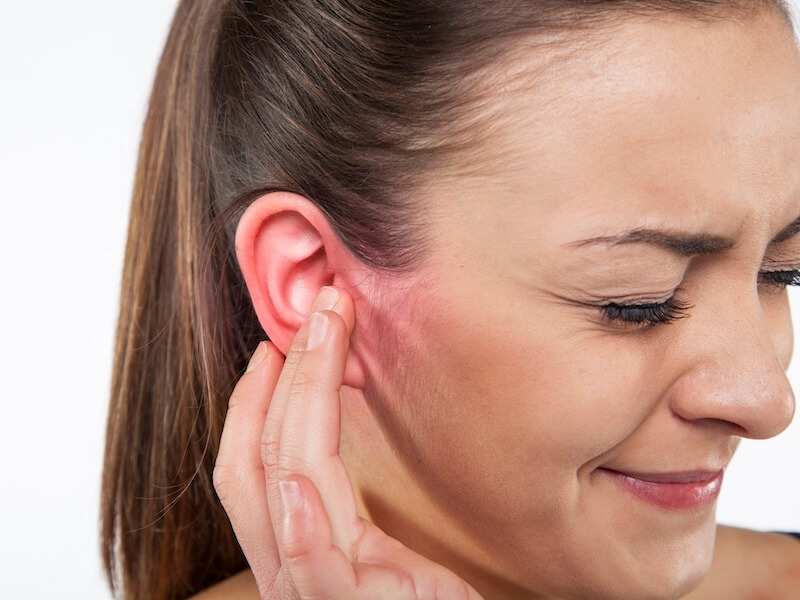
Surprisingly, around 20% of all ear infections happen to adults. The common idea is that ear infections are something that usually affect kids. And it’s accurate that ear infections are more common in kids, but they also occur frequently in adults.
For adults with hearing impairments or hearing loss, ear infections can be especially inconvenient, as they can interact with hearing aids in some unpleasant ways. Additionally, when hearing aids are not properly maintained, they can become a vehicle for ear infection-causing diseases.
So is it a bad idea to use hearing aids with an ear infection? You can, but it might not be something you want to do. Ear infections can cause significant inflammation and discomfort in the ear, and your hearing aids may worsen those symptoms. However, there are some steps that those who use hearing aids can take to help avoid and manage ear infection symptoms.
Do hearing aids cause ear infections?
If you’re an adult with hearing loss and you start to notice the symptoms of an ear infection, you might begin to wonder: did my hearing aids cause my ear infection? Technically, the answer is no. But in order to get the full picture we need to view it in greater detail.
Almost all ear infections are caused by bacteria or a virus that gets into the ear. There are a wide variety of vectors that can result in infection. Often, a previous illness, such as a cold or sinus infection, will result in an infection of the inner ear. An infection might be caused by fluid accumulation in other instances. It’s also entirely feasible that a virus or bacteria directly infected the inner ear by physical transmission.
For individuals who wear hearing aids, this can be a regular occurrence. The virus or bacteria hitches a ride on your hearing aid and, when inserted, gets access to the inner ear. Proper hearing aid cleaning and maintenance is crucial for this reason. So the virus or bacteria is actually the cause of the infection, not the hearing aid itself. But your device may play a role in transmission.
How ear infections interact with hearing aids
So, how do ear infections and hearing aids interact? The best way to anticipate what to expect is to examine the most common ear infection symptoms. In general, ear infections will present with the following symptoms:
- Ear pressure or a feeling of fullness
- Discharge of fluid from the ear
- Dizziness or vertigo
- Ringing in the ears (tinnitus)
- Inflammation and swelling
- In some situations, temporary hearing loss
- Pain in the ear
Not everybody will suffer from every symptom, of course. Usually, you will have noticeable inflammation of the inner ear and ear pain in the infected ear. These symptoms can have a negative interaction with hearing aids for individuals with hearing loss. That’s because the hearing aid goes inside the infected ear (at least some of it). Your hearing aids might cause added discomfort as they aggravate the tender inflamed infected ear.
Additionally, any in-the-canal hearing aid can stop drainage. Your infection and discomfort may last longer if fluid is stuck in your ear. The pain and pressure in your ears will be increased as a result of this. This pressure can be even more pronounced when you’re wearing your hearing aid.
The functionality of your hearing aid can also be impacted by the excess moisture. So your hearing aids aren’t functioning at peak performance and your ears are in pain. Which means that wearing hearing aids when you have an ear infection can be a downright miserable time.
Ear infection & hearing aid solutions
So what can you do if your hearing aids are bothering you while you have an ear infection? There are several steps you can take to reduce your risk of developing ear infections and to manage the discomfort that an ear infection may cause. Those steps include the following:
- Talk to your hearing specialist: Think about coming in to have your hearing aid re-fit if your ear infection clears but your hearing aid is still uncomfortable.
- Take breaks from wearing your hearing aids: If the pain is persistent or significant, it’s okay to take a break from wearing your hearing aid until your ears are feeling better. You can use alternative methods of communication with friends and family, like texting, in the meantime.
- Talk to your healthcare provider: If you think that you have an ear infection, speak with your doctor as soon as possible. The sooner you treat the ear infection, the less severe or prolonged your symptoms will be.
- Regularly clean your hearing aids: Keeping your device clean can decrease the risk of transferring bacteria or viruses to your ears. Ask us for help if you’re not certain how to correctly clean and sanitize your hearing aids.
- Practice good ear hygiene: It’s important to keep your ears clean and dry and routinely clean your outer ear. Don’t try to stick anything in your ear, however, including cotton swabs. Using cotton swabs can push earwax and other debris further into your ear, increasing your risk of developing an infection. You’re trying to accomplish the exact opposite.
You most likely depend heavily on your hearing aid every day. They help you get around your world more easily and have better communication with your friends and family. That makes it really hard to give up your hearing aid even for short periods. However, you will have a speedier recovery from your ear infection if you take a break from wearing them until you heal up. That means you can get back to enjoying what you hear faster.
Ear infections are fairly common. But that doesn’t mean you shouldn’t get treatment or try to prevent them. If you have questions about how ear infections may impact your hearing aid use, give us a call today.